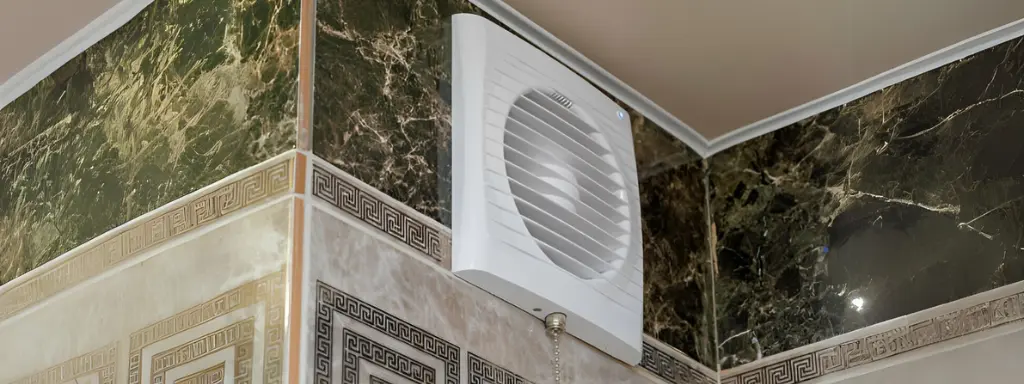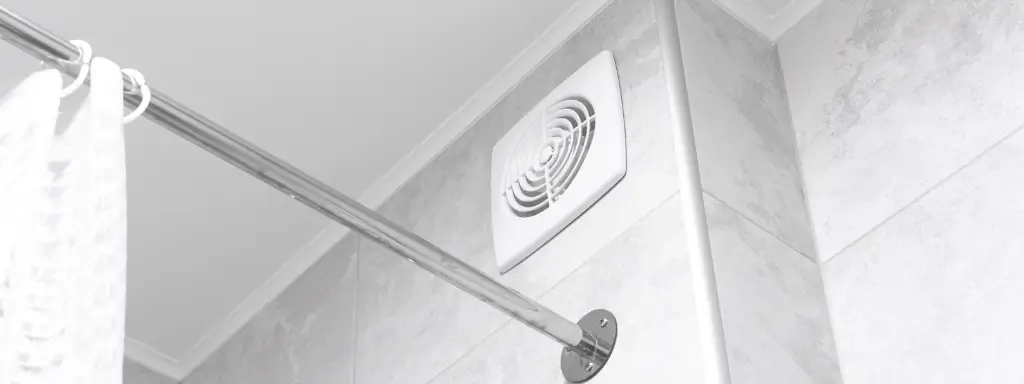Good ventilation in your bathroom matters more than comfort—it’s vital. When you shower or bathe using hot water, the bathroom quickly fills with steam. If the moisture doesn’t leave, it can cause mold, cracking paint, warped surfaces, and persistent odors. Understanding how to ventilate your bathroom keeps your home and yourself safe.
Although venting bathroom moisture outside works best, it’s not always possible in every house or structure. Even if your bathroom doesn’t have a window, is in the middle of the house, or lacks a way to connect to ducts, there are good solutions for better air movement and moisture management. We will explain commonly used and newer methods for ventilating your bathroom so it always feels fresh and uncontaminated.
Why Bathroom Ventilation Is Crucial

A bathroom is usually the wettest room in any home. If moisture cannot escape, mold and mildew will grow fast. Mold and mildew look bad, but they also lead to allergies, breathing problems, and ongoing harm to the structure and fixtures in your bathroom.
If a bathroom isn’t well ventilated, it’s easy to see odors, foggy mirrors, and a drop in indoor air quality. These things can cause the bathroom to get stuffy, dirty, and uncomfortable. Ventilation should always be a main concern, whether you are building or renovating.
Standard Method: Carrying Moist Air to the Exterior via Wall or Roof
Typically, a bathroom exhaust fan is installed in the ceiling or wall and connected to a duct that removes moisture from the home. It’s best to place these fans by the shower or tub and operate them for at least 15–20 minutes after bathing.
Proper installation helps prevent duct leaks or blockages. Leaky duct installations can hold moisture in attics or crawlspaces, causing even more problems. This solution gives the best results when your home has the proper access.
No Outside Access? No Problem.
Many apartments and basement bathrooms can’t be easily vented to the outside. You still have useful options if your bathroom doesn’t offer a clear path. Here are some trusted solutions:
Why Bathroom Ventilation Is Crucial
1. Recirculating Bathroom Fan
Many people choose this in bathrooms where vents to the outside aren’t possible. Recirculating fans keep the air inside the toilet by filtering it and then releasing it back into the room. Most of these units have charcoal filters to remove odors and control humidity.
Placement: You’ll get the most results by putting the fan above your shower or bathtub.
Maintenance: Maintain your fan by changing or cleaning the filter every 6 to 12 months, according to your bathroom use.
Keep in mind that recirculating fans don’t remove all the moisture. They help keep humidity lower, but they are most reliable when used with other moisture solutions.
2. Portable Dehumidifier
A small dehumidifier removes extra moisture from the air without making noise, helping to control how humid your space feels. Renters and homeowners who can’t do structural work should consider this choice.
Placement: Put the dehumidifier in a corner close to the shower or tub.
Maintenance: Remember to empty the tank often, or pick a model designed with a drainage hose.
Even though it’s not traditional ventilation, a dehumidifier improves air quality and stops mold from growing.
3. Passive Airflow Solutions
Easy and inexpensive changes can make a big difference in airflow. You can support better natural air movement by leaving the door open after a shower, placing grilles or vents on doors, and having ceiling transoms.
Tip: Add a fan or dehumidifier to passive airflow for the best results.
4. In-Line Duct Fan Including a Charcoal Filter
Choosing an in-line duct fan is a good option if your bathroom is part of a shared duct system or is in the middle of the house. Located inside the ducts, these fans quietly take air from the bathroom and send it through a filter.
Installation: A professional HVAC technician should do the installation.
Maintenance: Change the charcoal filter based on what the manufacturer suggests.
This method is effective for commercial spaces or houses with one common ventilation path for several bathrooms.
5. Mini-Split System (For Larger Upgrades)
If you are making significant changes in your space, a ductless mini-split HVAC system can handle heating, cooling, and moisture control. They’re robust and quiet, and make a big difference in bathrooms lacking ventilation or air conditioning.
Note: They’re a bit pricey to set up, but they give comfort and energy savings all year round.
6. Use a Window—If It’s Available
Open windows, no matter how small, can improve your bathroom’s air quality. While you shower, crack the window to let steam out. If the room lacks airflow, you can use a small window fan.
You can still use this classic method as long as there is a way for air to move in and out of your bathroom.
Don’t Forget Maintenance
You should never forget that cleaning your ventilation is very important, regardless of your chosen solution. Your ventilation won’t work well if the filters, fan blades, or vents are dust-filled. If you clean your fan and look at your filters every season, your home will have better air flow. Failing to take care of your fan can hurt its performance and reduce its lifespan.
Final Thoughts
A ventilated bathroom feels nice to use and lasts much longer. Wet conditions can spoil your walls, fixtures, and air. When you can’t install a fan next to an exterior wall, you still have solutions to manage moisture and smells. Even if your bathroom is different, you can use a basic dehumidifier or air filter or choose a more complex in-line fan or mini-split, depending on what you need and can afford.
Doing something now will prevent damage to your bathroom, improve the air, and help everyone feel at ease in your home.





